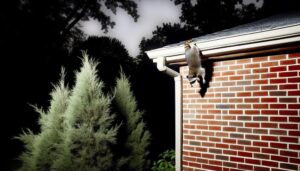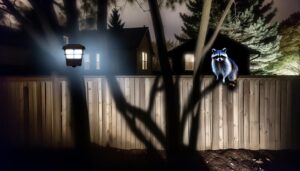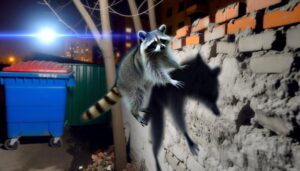Does Your Home Insurance Cover Raccoon Damage?
Home insurance usually does not cover damage caused by raccoons. These policies aim to protect homeowners from specific perils, such as fire, theft, and certain natural disasters.
However, damage by pests, including raccoons, is often excluded. Coverage generally applies to sudden, accidental damage rather than gradual or preventable issues.
Understanding your policy's exclusions and limitations is important. Documenting any damage meticulously and consulting with your insurer can provide clarity on potential claims.
For those looking to safeguard their property and prevent raccoon infestations, additional steps can be taken. To make sure you have thorough protection and necessary preventive measures, keep exploring.
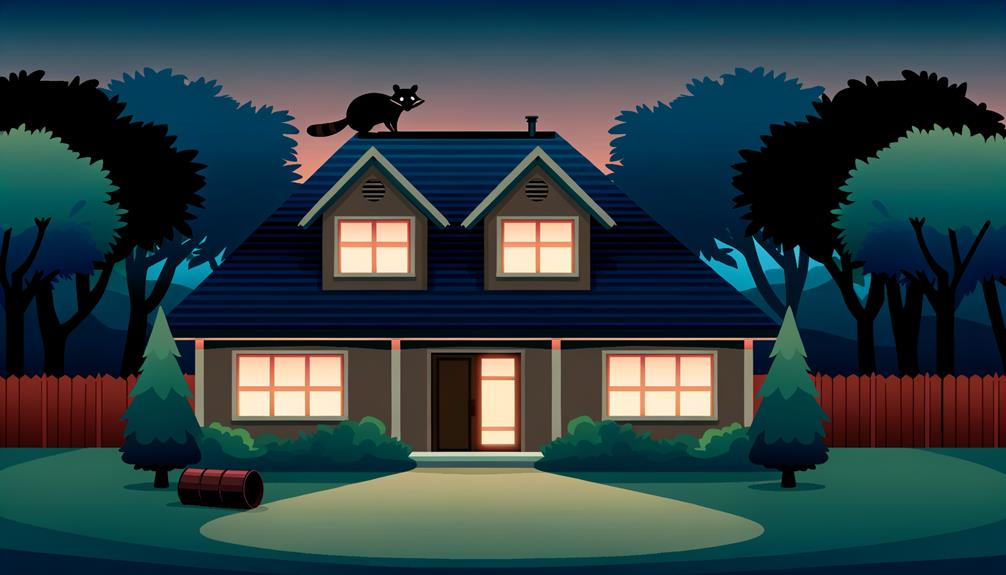
Key Takeaways
- Most home insurance policies exclude damage caused by pests like raccoons.
- Structural damage from raccoons is typically not covered under standard home insurance policies.
- Policies may cover sudden, accidental damages but not gradual, long-term damage from raccoons.
- Reviewing policy exclusions is essential to understand coverage for raccoon damage.
- Preventative measures can help avoid raccoon infestations and potential damage.
Understanding Home Insurance Policies
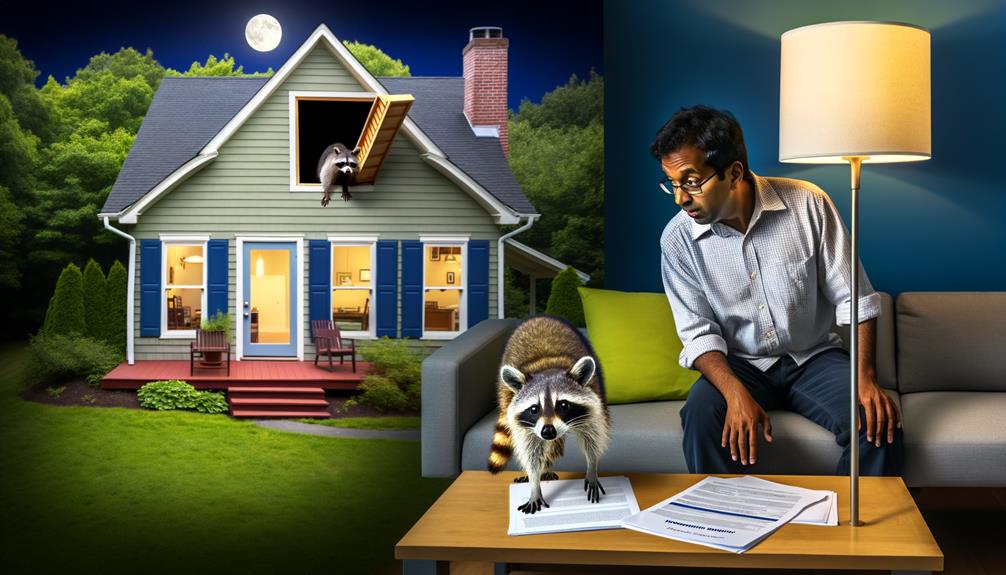
Home insurance policies encompass a range of coverages designed to protect homeowners from financial losses due to various hazards and perils. These policies are carefully structured to offer compensation for damage to the dwelling, personal property, and additional living expenses incurred during repairs. They also typically include liability protection against legal claims arising from injuries or property damage caused by the homeowner's negligence.
Each policy is bounded by terms, exclusions, and limits that dictate the extent of coverage. Understanding these intricacies is vital for homeowners to make sure they are adequately protected. The policy details can greatly influence the financial resilience of homeowners, making it essential to thoroughly review and comprehend the specific coverages and exclusions outlined in their insurance agreements.
Common Types of Covered Damages
Assessing the usual kinds of included damages within a home insurance policy reveals an extensive protection plan designed to minimize losses from various perils such as fire, theft, and certain natural disasters. Generally, these policies cover structural damage to the home itself, including walls, roofs, and foundations.
Additionally, personal property coverage extends to belongings such as furniture, electronics, and clothing, safeguarding against theft or destruction. Liability protection is another crucial component, covering legal and medical expenses if someone is injured on your property.
Moreover, loss of use coverage guarantees that living expenses are covered if the home becomes temporarily uninhabitable. These inclusive aspects of coverage provide homeowners with significant security against a wide range of potential hazards.
Exclusions and Limitations
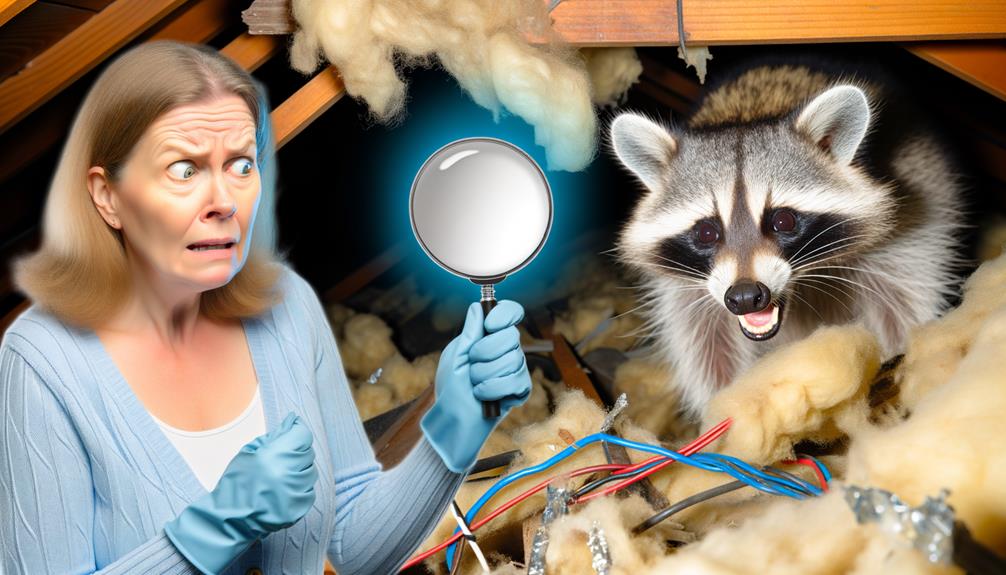
While home insurance policies offer extensive protection against numerous risks, they also come with specific exclusions and limitations that homeowners must carefully consider. One significant exclusion is damage caused by pests, including raccoons. Insurers often classify raccoon damage as preventable, thereby excluding it from standard coverage.
Additionally, policies may limit coverage based on the type of damage, such as excluding structural damage while covering personal property. Homeowners should meticulously review their policy to understand these nuances.
Furthermore, certain policies might stipulate that only sudden, accidental damages are covered, effectively excluding gradual, long-term damage caused by raccoon infestations. Understanding these exclusions and limitations is essential for homeowners aiming to fully grasp the scope of their insurance coverage.
Steps to File a Claim
Initiating a claim for raccoon damage requires homeowners to diligently document the incident and gather all necessary evidence to support their case. This guarantees the insurance provider has a complete and accurate picture of the damage incurred.
Follow these steps to streamline the claim process:
- Document the Damage: Take detailed photos and videos of all affected areas, highlighting the extent of the raccoon-induced damage.
- Compile Evidence: Collect receipts, repair estimates, and any other relevant documents that can validate the claim.
- Notify Your Insurer: Contact your insurance company promptly to report the incident and begin the formal claim process.
- Complete Claim Forms: Fill out all required documentation accurately and submit it along with the gathered evidence to your insurer for review.
Preventing Raccoon Infestations
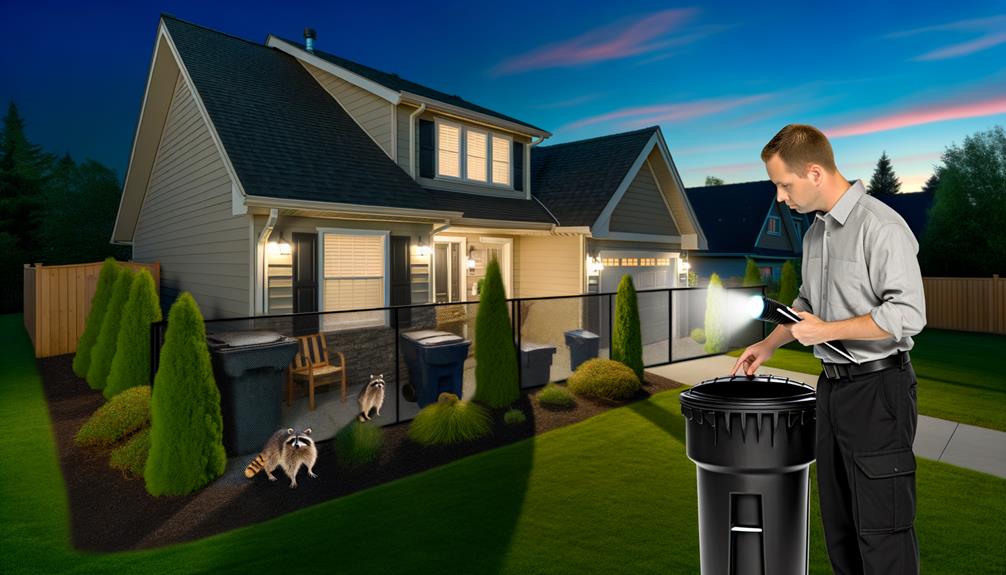
To effectively prevent raccoon infestations, homeowners should implement stringent measures to secure potential entry points and remove attractants from their property. Ensuring that garbage bins are tightly sealed, and pet food is not left outside, are critical first steps. Additionally, inspecting and repairing any gaps or openings in roofs, chimneys, and vents can prevent raccoons from entering homes.
Implementing these measures can be summarized in the table below:
| Measure | Action | Frequency |
|---|---|---|
| Secure Garbage Bins | Use raccoon-proof lids | Weekly |
| Remove Pet Food | Feed pets indoors | Daily |
| Inspect Roofs | Check for gaps or damage | Quarterly |
| Seal Chimneys & Vents | Install caps or screens | Annually |
| Trim Tree Branches | Keep branches away from the house | Seasonally |
These actions collectively mitigate the risk of raccoon infestation.
Conclusion
Finally, understanding the nuances of home insurance policies is essential for determining coverage of raccoon damage. While common types of damages are usually covered, policy exclusions and limitations often apply to wildlife-related incidents. How can homeowners guarantee their claims are successful?
By carefully following the steps to file a claim and implementing preventive measures, homeowners can better navigate these complexities and safeguard their properties from potential raccoon infestations. An informed approach notably reduces risks and enhances policy benefits.


